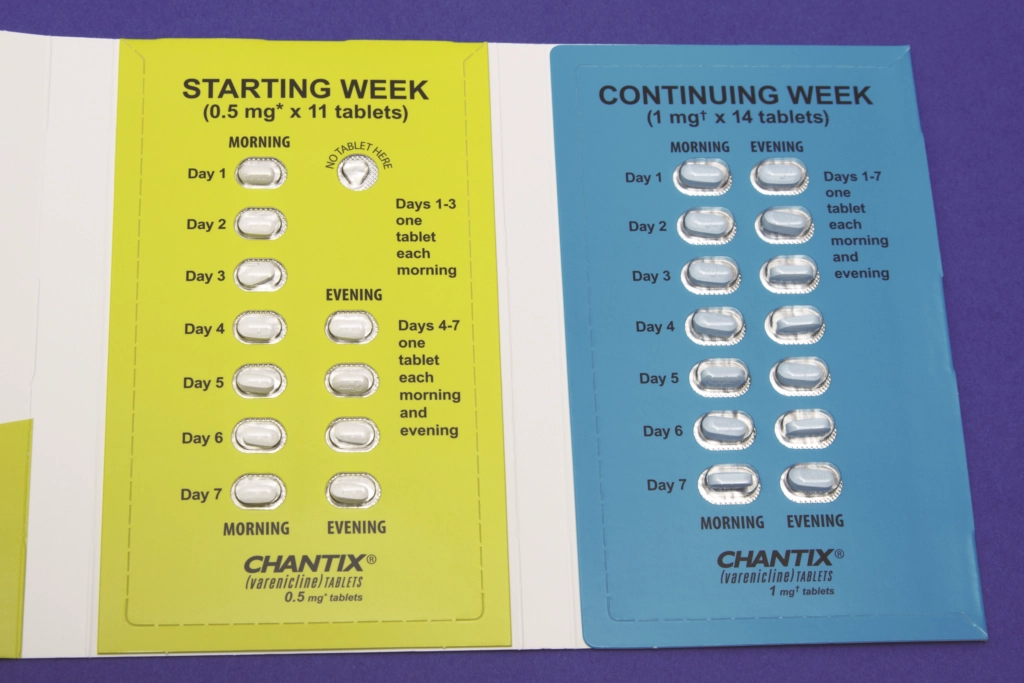The FDA-approved smoking cessation pill, varenicline, is emerging as a powerful ally in the battle against nicotine addiction, especially among teens and young adults grappling with vaping. Recent findings reveal that those taking varenicline have a staggering three times the success rate in quitting vaping compared to peers on placebo. With vaping becoming an omnipresent habit among younger populations, effective measures like this medication are crucial. The varenicline success rate is promising, showing not only effectiveness but also safety, as participants reported minimal adverse effects. In a landscape where traditional smoking cessation methods may not resonate with younger users, exploring options like varenicline provides essential quit vaping tips and a viable path to healthier futures.
The discussion around nicotine addiction often includes terms like smoking cessation drugs, vaping cessation strategies, and FDA-approved therapies for quitting smoking. Variants of treatment, such as the aforementioned varenicline, showcase how modern medicine is evolving to meet the unique challenges posed by teen vaping studies. By addressing nicotine dependency, these innovative medications can offer a lifeline to those unable to quit through willpower alone. The effectiveness of smoking cessation pills signifies a broader acceptance and understanding of nicotine-related health concerns within vulnerable demographics. Hence, in the quest to eradicate vaping from youth culture, exploring various cessation methods has never been more essential.
The Effectiveness of Varenicline for Smoking Cessation
Varenicline, recognized as an FDA-approved smoking cessation pill, has emerged as a leading option for young individuals looking to kick the habit of vaping. In a recent study involving participants aged 16 to 25, it was demonstrated that those taking varenicline had a staggering 51% success rate in quitting vaping after just 12 weeks. This was effectively three times higher than their peers who received placebo treatment. As vaping continues to rise in popularity among teens, the significance of effective cessation methods becomes increasingly crucial. Varenicline not only assists users in breaking free from nicotine addiction but also provides a reliable and tested option for young adults dedicated to improving their health.
Further clinical trials have consistently shown a high success rate of varenicline among young adults, emphasizing its role as a safe and effective option. With the alarming trends of vaping addiction among teenagers, including over 8% of high schoolers using vapes, there is an urgent need for interventions. Studies reveal that early nicotine exposure can lead to increased addiction to other substances in the future. Therefore, the findings surrounding varenicline’s efficacy are pivotal in shaping public health policies aimed at reducing teen vaping rates.
Frequently Asked Questions
What is the success rate of varenicline as a smoking cessation pill for teens?
According to a study published in JAMA, teens and young adults using varenicline, an FDA-approved smoking cessation pill, had a quitting success rate of 51% after 12 weeks compared to just 14% in the placebo group.
How does varenicline help with vaping cessation?
Varenicline aids vaping cessation by reducing nicotine cravings and withdrawal symptoms, making it easier for individuals to stop using nicotine products. This FDA-approved smoking cessation pill is specifically effective for teens and young adults addicted to vaping.
Can varenicline be prescribed to young adults trying to quit vaping?
Yes, varenicline can be prescribed to individuals aged 16 to 25 who want to quit vaping. It has shown to be especially effective among this demographic, helping them successfully discontinue nicotine use.
Are there any risks associated with using varenicline as a smoking cessation pill?
The clinical trials showed that varenicline is largely safe for teens and young adults. Notably, participants who quit vaping with this medication did not turn to cigarettes, showcasing its safety profile as an FDA-approved option for vapor cessation.
What additional support is available when using varenicline for quitting vaping?
Participants in the study received weekly behavioral counseling and access to a text support service called ‘This is Quitting,’ which enhances the effectiveness of the varenicline smoking cessation pill.
What are some quit vaping tips for those considering varenicline?
When using varenicline, it’s helpful to combine it with behavioral therapy, create a support network, set a clear quit date, and use tools like the ‘This is Quitting’ text service to increase chances of success.
How does the FDA approval of varenicline influence its use for vaping cessation?
The FDA approval of varenicline for smoking cessation means that it is recognized as a safe and effective option for helping individuals, including teens, to break their nicotine addiction, making it a viable option for vaping cessation.
What were the findings of teen vaping studies regarding varenicline?
Recent teen vaping studies indicated that those who used varenicline had over three times the success rate in quitting vaping compared to those who only received placebo treatment, underlining the pill’s effectiveness in addressing nicotine dependence.
| Key Points |
|---|
| Varenicline is an FDA-approved smoking cessation pill for teens and young adults. |
| Teens using varenicline had three times more success quitting vaping compared to a placebo. |
| The study included participants aged 16 to 25, with weekly counseling and text support. |
| At 12 weeks, 51% of participants using varenicline quit vaping, vs 14% in placebo group. |
| The safety of varenicline was confirmed; no participants turned to cigarettes after quitting. |
Summary
The smoking cessation pill, varenicline, has proven highly effective in helping adolescents and young adults quit vaping. In a clinical trial, participants aged 16 to 25 who were prescribed varenicline had a significantly higher success rate—over three times more—than those who received placebo treatment. With 51% of varenicline users quitting at the 12-week mark, this pill offers not only effectiveness but also safety, as no participants transitioned to cigarette smoking following cessation. This breakthrough underscores the importance of providing accessible treatment options for the growing number of young people addicted to nicotine.
